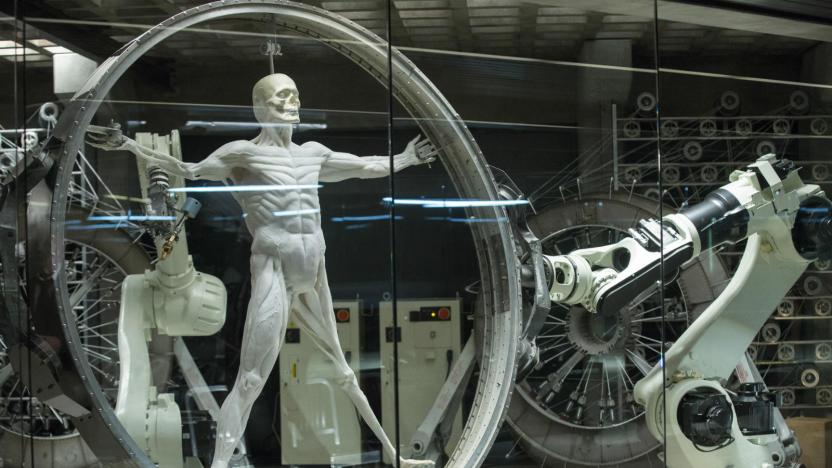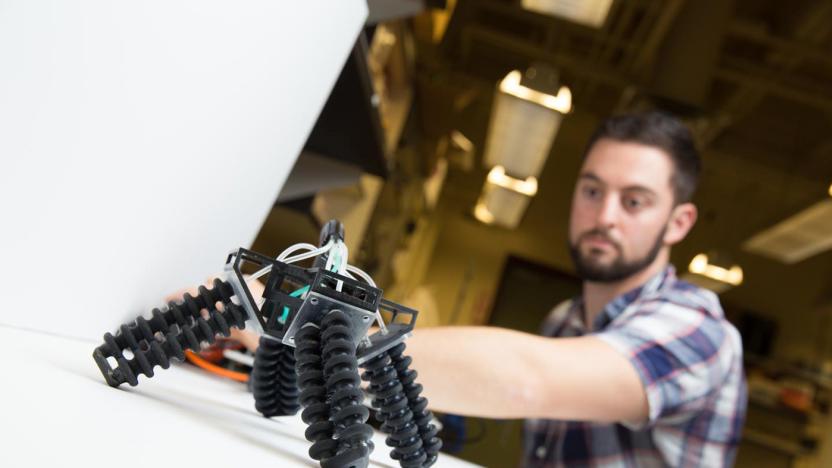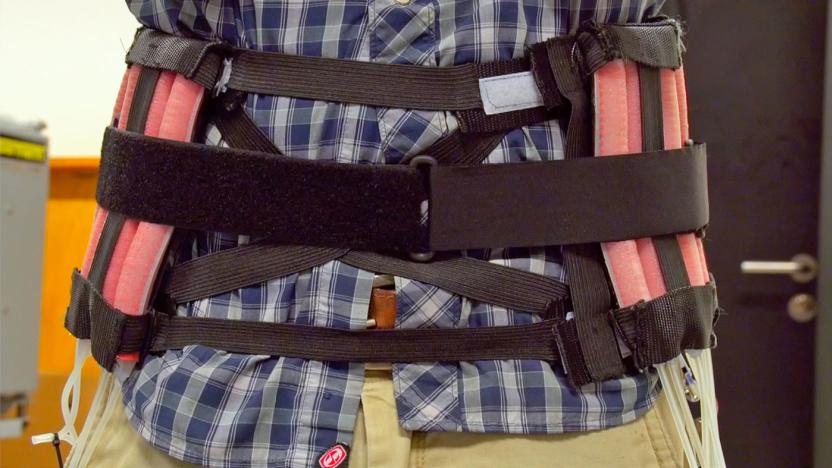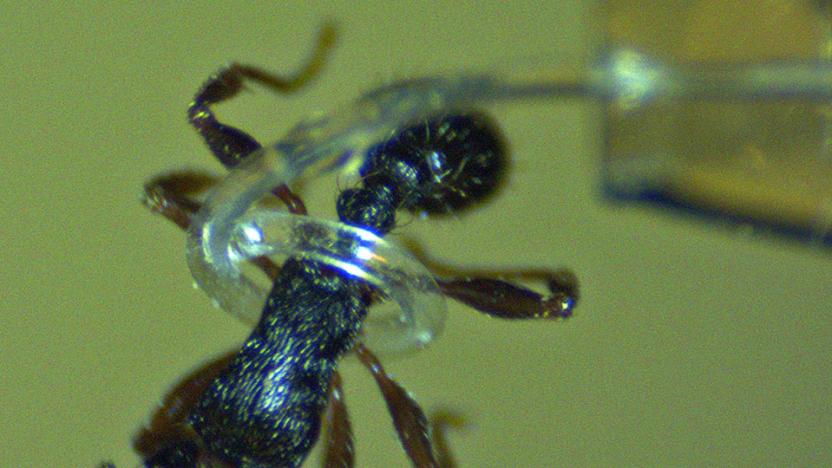softrobots
Latest

Synthetic muscle breakthrough could lead to 'lifelike' robots
A breakthrough in soft robotics means scientists are now one step closer to creating lifelike machines. Researchers at Columbia Engineering have developed a 3D printed synthetic tissue that can act as active muscle. The material, which can push, pull, bend, and twist (thanks to its use of silicone rubber and ethanol-dispensing micro-bubbles) is also capable of carrying 1,000 times its own weight. Not only could the invention result in super-strong machines (like a Terminator that works in manufacturing), but it will also release soft robots from their current shackles.

Soft-legged robot is designed for rescue missions
Soft robots typically have squishy bodies and limbs so that they can squeeze into the tightest spaces. If they're to be used for search and reconnaissance missions, though, they'll need to be able to navigate rough terrains. A team of engineers from the University of California San Diego have created a soft robot that can do just that. They made a four-legged machine that can not only wriggle into confined spaces, but also climb over obstacles and walk on sand, pebbles, rocks and even inclined surfaces. The team's secret? A high-end 3D printer that can print soft and rigid materials together.

Muscle-mimicking soft robots can help with physical therapy
Some soft robots can wriggle into tight spots and swim like a real octopus. These ones developed by a team from the École polytechnique fédérale de Lausanne (EPFL), however, are also capable of doing something more: they can help with the physical rehabilitation of people recovering from injuries and illnesses. The EPFL team have created a number of flexible, reconfigurable machines that can mimic human muscles' movement. They're made of silicon and rubber -- though the team also made a variant using a thick paper shell -- and they can be controlled by manipulating how much air they have inside.

ICYMI: Soft robot challenge, NASA's space sails and more
#fivemin-widget-blogsmith-image-736059{display:none;} .cke_show_borders #fivemin-widget-blogsmith-image-736059, #postcontentcontainer #fivemin-widget-blogsmith-image-736059{width:570px;display:block;} try{document.getElementById("fivemin-widget-blogsmith-image-736059").style.display="none";}catch(e){}Today on In Case You Missed It: NASA announced a space probe this week that will use solar sails to leave Earth's orbit; the first spacecraft from the agency to do so. It should go up in 2018 and its mission is to get a good view of an asteroid.

Microrobotic tentacles pick up bugs without squishing them
Some researchers develop soft robots, while others specialize on building tiny ones. This robotic tentacle by a team of engineers from Iowa State University, however, is both soft and tiny. In fact, that's a true-to-size ant encircled by the tentacle in the picture above and not a scaled-up version of the bug. Associate electrical/computer engineering professor Jaeyoun (Jay) Kim wanted to "pioneer new work in the field with both microscale and soft robotics." So, he and his team set out to make microtubes using a silicon-based material called PDMS, measuring 8 millimeters in length and less than a hundredth of an inch in width.


